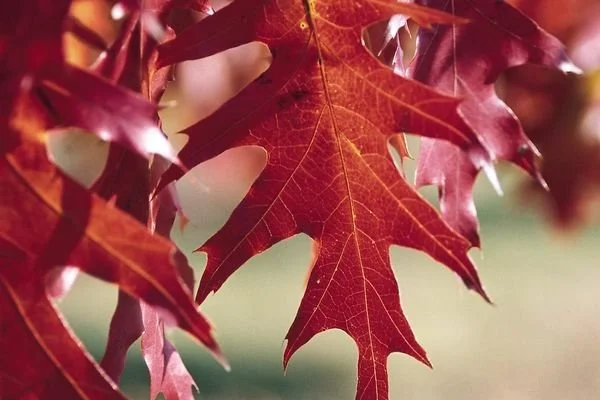The heat of summer hasn’t slowed things down—in fact, August is when some of the most iconic garden stars take center stage. With vibrant blooms, graceful movement, and bold structure, this month’s plant highlights are proof that your landscape can still bring the wow-factor well into late summer.
Topping the list is the ever-reliable Black Eyed Susan, with its cheerful yellow blooms that practically scream "August." It’s a pollinator favorite and a classic for good reason. Prairie Dropseed Grass is also in its prime, adding soft texture and flowing movement that catches every breeze. The Northern Exposure Coral Bell is holding strong with its lush foliage—bringing steady color and interest even in the heat. And anchoring it all is the Northern Red Oak, a stately shade tree that's showing off its dense canopy and beginning to form acorns—nature’s signal that fall isn’t far off.
These standout plants offer more than just looks—they bring resilience, longevity, and seasonal beauty to your landscape. Stop by the nursery to see them up close and let us help you pick the perfect additions for your space. August isn’t winding down—it’s blooming strong. Let’s keep growing!
Black Eyed Susan
Image source: Bailey Nurseries
Description:
Produces masses of showy, golden yellow, daisy-like flowers from July to mid-October. Goldfinches love the seeds. Vigorous. Fertile, loose soil. Perennial Plant of the Year for 1999. Pride of KS Plants 2002.
Species Specs
Height: 24-30”
Spread: 24-30”
Exposure: Full Sun
Foliage: Green
Zone: 3-9
Plant Care:
Black Eyed Susans are low-maintenance perennials that thrive in full sun but can tolerate partial shade. They’re adaptable to a variety of soil types—including clay, gravelly, or soils with acidic or alkaline pH—as long as there’s good drainage. Water regularly during dry periods, but be careful not to overwater. These plants don’t need much feeding; a slow-release granular fertilizer in spring does the trick. Mulching with bark or even dead leaves helps conserve moisture and keep weeds at bay. For the best bloom show (and less self-seeding), deadhead spent flowers throughout the season.
Prairie Dropseed Grass
Image source: Bailey Nurseries
Description:
This native American prairie plant forms a beautiful, upright, arching clump. Slow-growing, but worth the wait. The emerald green foliage is fine-textured. The flowers appear in August; the 6-8" panicles rise 2-3' above the foliage and have a sweet fragrance. Once the seed ripens, they droop over. In autumn, the plant turns a golden yellow, sometimes with orange hues, and then the entire plant turns a light brown for the winter months. Extremely heat and drought tolerant. Clump forming.
Species Specs
Height: 2-3’
Spread: 2-3’
Exposure: Full Sun
Foliage: Green
Zone: 3-9
Plant Care:
Prairie dropseed grass is a low-maintenance native perennial grass that thrives in full sun and well-drained soil, tolerating various soil types including clay. Once established, it requires minimal care beyond occasional removal of old foliage in late winter or early spring. It's known for its drought tolerance, deer resistance, and ability to attract wildlife.
Northern Exposure™ Coral Bells
Image source: Bailey Nurseries
Description:
Clean lines for the landscape with clear amber, round leaves on a dense, medium size mound. This showy garden plant was bred from hardy H. richardsonii and looks good longer in the season than other Heuchera. Great rust resistance and longevity.
Species Specs
Height: 14-18”
Spread: 20”
Exposure: Full Sun to Full Shade
Foliage: Amber
Zone: 3-9
Plant Care:
Northern Exposure™ Coral Bells (Heuchera) thrive in well-drained soil and prefer partial shade, meaning 4-6 hours of direct sunlight daily, with protection from scorching afternoon sun. They need consistent moisture, especially during establishment and in full sun. Dividing every 3-4 years and occasional pruning of foliage in spring can help maintain their health and appearance.
Northern Red Oak Tree
Image source: Bailey Nurseries
Description:
The fastest growing oak and one of the easiest to transplant, this tree is great for street use or as a landscape tree. The foliage is dense and lustrous and leaves hang on the tree into winter. Named the 1999 Iowa Tree of the Year.
Species Specs
Height: 60-80’
Spread: 50’
Exposure: Full Sun
Foliage: Glossy, dark Green turning to Red in Fall
Zone: 3-8
Plant Care:
Northern Red Oak is a relatively low-maintenance tree, but proper care ensures its health and longevity. Key aspects include providing adequate sunlight, well-draining soil, and appropriate watering, especially during establishment. Regular pruning is generally not needed, but removing dead or damaged branches in late winter or early spring is beneficial.




